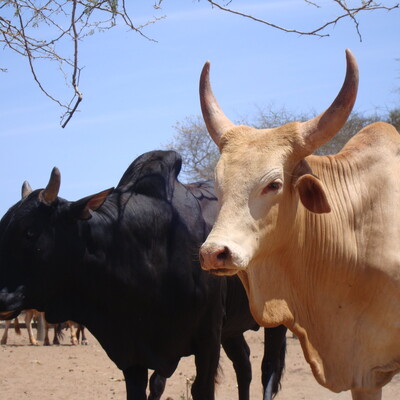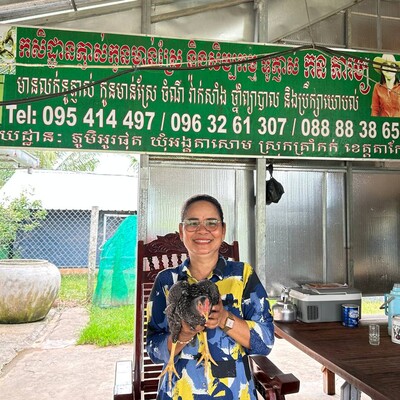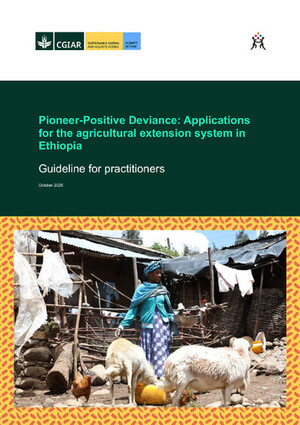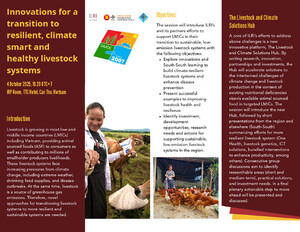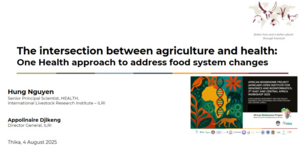
Conservation agriculture techniques are improving agricultural productivity in Zimbabwe’s drylands
Agriculture remains the backbone of Zimbabwe’s economy contributing about 17% percent to the country’s gross domestic product (GDP). Almost 70% of livelihoods in rural Zimbabwe depend on agriculture, and a third of the formal labour force come from this sector.
However, the country’s agricultural sector is facing serious challenges from low and erratic rainfall, low and declining soil fertility, low investment, shortages of farm labour and draught animals, poor physical and institutional infrastructure, poverty, recurring food insecurity and periodic droughts.
In the face of these challenges, the ‘safety net’ role of livestock and their products is increasingly important. Livestock are important safeguards especially during drought, and contribute significantly to Zimbabwe’s agricultural GDP, with cattle accounting for 35–38% of it. The Food and Agriculture Organization of the United Nations (FAO) estimates that up to 60% of rural households own cattle, 70–90% own goats, and over 80% own chickens. By providing meat, milk, eggs, hides and skins, draught power, and manure to rural households, livestock foster food security and provide a form of insurance in times of crop failure. Sheep, goats, and poultry are easily disposable for cash during such periods.
Like most smallholders in Zimbabwe, Fungai Kativu, a 54-year-old farmer in Ward 7 of Mutoko District, has cultivated maize as the staple food crop for many years. In the last cropping season Kativu faced high labour costs and was forced to sell crops to buy feeds for his livestock at high cost. He employs labourers to help with farm work as all seven of his children migrated to the capital, Harare, for work.
Agriculture for development projects in Zimbabwe have been testing out several technologies to improve livestock and agricultural productivity. But the adoption rates of these technologies are low due to lack of awareness and capacity of farmers and government institutions. The European Union-funded Adoption and scaling up of improved livestock production systems in Zimbabwe (LIPS-Zim) project has been testing and introducing various climate-smart technologies to farmers in Zimbabwe’s arid and semi-arid regions IV and V. The aim is to boost food production for household consumption and fodder availability for animals especially during the dry months of August to November. The project is working with government and partners to increase the adoption of proven technologies and improving surveillance and detection of livestock diseases.
In September and October 2020, scientists from the International Livestock Research Institute (ILRI), the International Maize and Wheat Improvement Center (CIMMYT), and the national agricultural research system (NARES) trained farmers in Mutoko, Buhera and other districts on conservation agriculture (CA) practices such as intercropping techniques and water conservation practices. Known as ‘Pfumvudza’ locally, CA is also being promoted extensively by the government through its extension systems. The training sessions gave farmers information and skills for coping with shortages of labour and climate-change-related challenges such as erratic rainfall, poor soil fertility, and recurring droughts. The CA practices will enhance agricultural productivity by reducing moisture loss through minimal soil disturbance and providing soil cover. Among the measures that farmers were encouraged to adopt are crop rotation and intercropping to reduce pests and diseases as well as improve soil fertility. CA also helps to save space and minimize resource bottlenecks and often improves yields relative to conventional tillage practices particularly in dry years.
Additionally, LIPS-Zim has provided 18 farmer groups in Mutoko, Buhera, Chiredzi, Beitbridge, Gwanda and Nkayi districts with agricultural machinery such as chopper grinders, hay balers, mowers, two-wheel diesel tractors and planters. The project has also trained the farmers to operate them. The machines are managed by a committee comprising a chair, treasurer and secretary who decide on the rate for renting the machines to ensure their sustainable use. Farmers in the wards who rent the machines for various activities pay for fuel and maintenance costs. The Agricultural Advisory Services (AARDS) facilitates the formation and operations of these farmer committees.
Kativu and other farmers in the ward are enjoying improved farm and livestock productivity from applying the CA techniques. He is currently intercropping maize with various legumes such as cowpeas, mucuna and pigeon peas on his farm. He also grows drought-tolerant and nutritious orange maize varieties that are good for both humans and animals. He used to spend USD 100 per month on livestock feeds but now he makes livestock feeds out of the crop stems. ‘I am no longer forced to sell crops to buy animal feeds and buyers no longer hesitate to pay any price for my livestock that are well fed and healthy,’ he says. He struggled in the past with feeding his livestock during the dry season.
Before the project, Trever Ncube, another participating farmer from Beitbridge Ward 5, planted Bana grass and purchased feeds during the dry season. Following the CA training, he is currently growing maize, millet, sorghum, groundnuts, round nuts, cowpeas, lucerne, lablab, and velvet beans for livestock feed. He received 1 kg lucerne, 5 kg forage sorghum, and 2 velvet bean seeds from the project in December 2021. Ncube and farmers in the ward using the CA techniques can now dictate the price of livestock unlike in the past where buyers dictated prices. Ncube says, ‘My livestock are well-fed, healthy and in good shape, I can name a price and buyers will take it.’ He plans to plant more lucerne in the next season as it has proven drought-resistant and preferred by the livestock.
Learn more about LIPS-Zim here: https://lips-zim.org/.
Read more about the project brochure here: https://cgspace.cgiar.org/handle/10568/110174.








